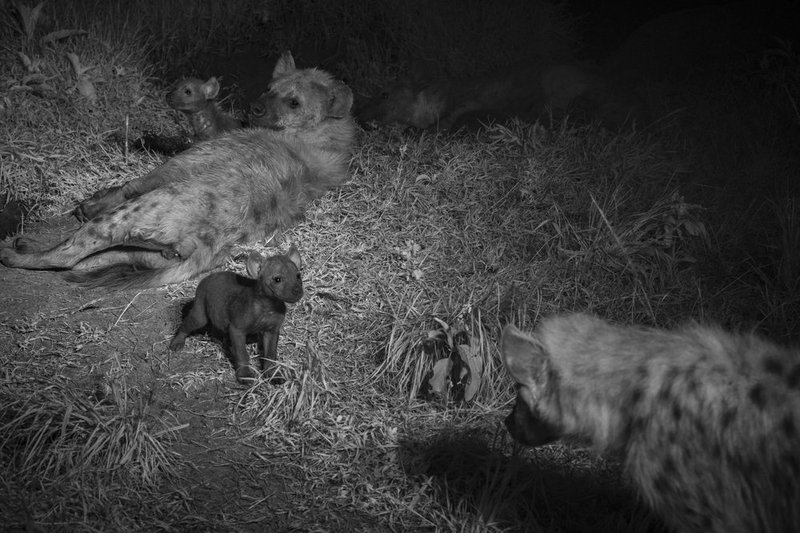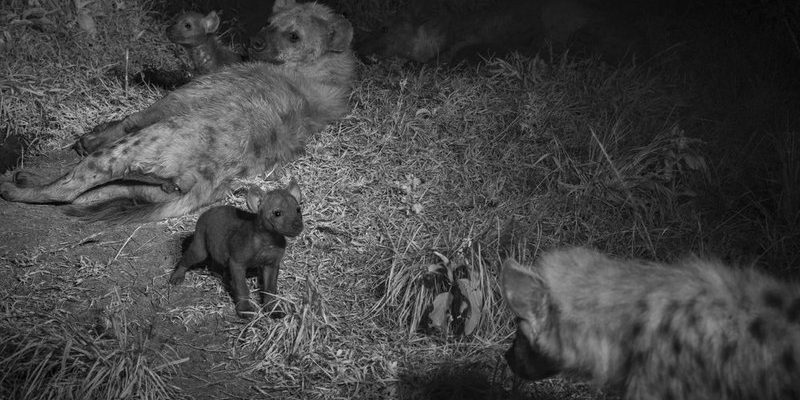
In the wild, spotted hyenas (Crocuta crocuta) are fascinating animals with complex social structures. They’re not just known for their robust hunting skills but also for their unique approach to parenting. Think of it like a bustling neighborhood, where everyone watches out for each other’s kids, sharing responsibilities and resources. Let’s dive into the world of spotted hyenas and explore how they nurture their young in fascinating ways.
Spotted Hyena Family Structure
One of the first things to know about spotted hyenas is that they live in large groups called clans. These clans can have 30 to 80 members, and social hierarchy is a big deal. Female hyenas generally dominate the clans, which is pretty unusual in the animal kingdom. The matriarchs are often larger and more aggressive than the males, making them the leaders.
In these clans, females give birth to their young in dens. The mothers will usually find a safe spot, often in abandoned burrows, where they can protect their cubs from predators. It’s not uncommon for a den to house multiple females and their cubs, creating a communal environment. This way, when a mother leaves to hunt, other females can look after the little ones, ensuring they’re safe and sound.
The bonds formed within these clans are deeply ingrained, providing a support network for mothers and their cubs. It’s like having a whole team to raise your kids, where every adult has a role in the upbringing of the young hyenas. This social structure is key to their survival in the wild.
The Birthing Process
Giving birth for spotted hyenas is quite an event. Female hyenas have an incredibly long gestation period that lasts about 110 days. When it’s time to deliver, they’ll retreat to the safety of their den. The birthing process is intense, sometimes taking several hours.
What’s unique here is that spotted hyenas give birth to live young, usually two to four cubs per litter. The cubs are born with their eyes open and are relatively well-developed compared to other animal newborns. This advantage helps them adapt quickly in the wild. However, it’s important to note that not all cubs will survive; competition for resources is fierce.
After the birth, it’s crucial for the mother to bond with her cubs. They engage in a process called grooming, where the mother licks and cleans them. This not only keeps the cubs hygienic but also strengthens the emotional connection between mother and offspring. You might say it’s their version of a cozy cuddle session right after birth.
Motherly Care and Feeding
Once the cubs are born, the real work begins. Mothers feed their young with nutrient-rich milk. This diet is essential for the cubs’ growth and development during their first few months. However, mothers don’t just stop there. Hyenas are known for their hunting prowess, and moms will actively hunt for food to bring back to their den.
You might wonder, “How do mothers ensure enough food for their young?” Here’s how: mothers usually join forces with other females in their clan to hunt. This cooperative behavior increases their chances of success. When they catch prey, they’ll often share the leftovers with their cubs, ensuring they’re well-nourished.
Additionally, mothers stay close to their cubs to protect them from potential threats. They have sharp instincts and will fiercely defend their young against predators, even if it means putting themselves in danger. It’s a powerful example of maternal love in the wild.
Social Learning and Play
Cubs learn essential survival skills through play and social interaction within the clan. This is where the fun truly begins. Young hyenas play with each other, practicing hunting skills or just goofing around. Imagine a group of kids playing tag; that’s the kind of energy we’re talking about!
During these play sessions, cubs learn valuable lessons about their role in the clan, including how to communicate and cooperate with others. You might see them mimicking adult behaviors, like stalking or chasing. This playful learning is crucial because it helps them develop the skills they’ll need later in life.
Interestingly, older cubs often take on mentorship roles, guiding younger ones in their play. It’s like having older siblings who show you the ropes. This social dynamic not only strengthens relationships within the clan but also sets the foundation for a cohesive community as they grow.
Challenges Faced by Hyena Cubs
Even with the support of the clan, hyena cubs face numerous challenges in their early life. One of the biggest threats comes from rival clans. Spotted hyenas are territorial, and if they venture too close to another clan’s territory, they risk encountering danger. This is why mothers keep a close watch on their young, especially once they start exploring the world outside the den.
Another challenge is the competition for food. The mother needs to keep her energy up to hunt effectively while also ensuring her cubs are fed. If resources are scarce, it can lead to tough situations where not all cubs survive. It’s a harsh reality, but it’s part of life in the wild.
In addition to these challenges, diseases can also pose a risk. Young cubs are vulnerable and may not have developed strong immune systems yet. Thus, keeping them away from sick animals and maintaining a clean den is essential for their survival.
Growing Up and Independence
As cubs grow, they gradually become more independent. By the age of six months, they’re usually weaned from their mother’s milk and start eating solid food. This transition is a significant milestone, as it enhances their ability to fend for themselves when needed.
During this time, the cubs continue to socialize and learn from older members of the clan. They start to participate in hunts, albeit in a limited capacity. It’s fascinating to watch them mimic adult behaviors as they gain confidence and skills.
By the age of two years, most hyenas reach independence and begin to carve out their own place within the clan. They might even start to participate in mating behaviors, continuing the cycle of life. The bonds formed during their early years will remain influential throughout their lives, impacting their social dynamics and interactions within the clan.
The Importance of Clan Cooperation
The way spotted hyenas raise their young emphasizes the importance of cooperation within their social structures. Every member of the clan plays a role in the nurturing and protection of the cubs. It’s a collective effort that enhances their chances of survival.
This cooperative spirit extends beyond just the cubs; it creates a strong community that can effectively handle challenges like food scarcity and territorial disputes with rival clans. The success of hyenas in the wild is largely due to this unique social structure, allowing them to thrive in various environments.
In essence, spotted hyenas offer a glimpse into a world where teamwork and family bonds are paramount. Their parenting strategies show us that when it comes to raising young, sometimes it truly takes a village—or in this case, a clan.
As we’ve explored, the journey of hyena parenting is complex and full of challenges, but it’s also rich in teamwork and nurturing love. From birth to independence, spotted hyenas showcase resilience and adaptability in ways that are both fascinating and inspiring. So, the next time you hear that distinctive laugh echoing through the African landscapes, remember the intricate lives behind those sounds, highlighting the beauty of nature’s parenting principles.

